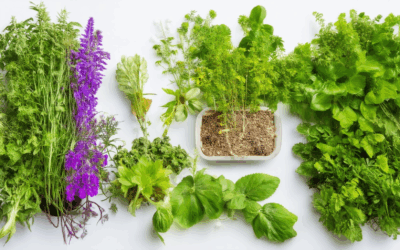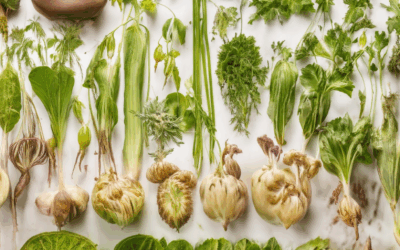Protecting plant heritage is a cornerstone of environmental stewardship, ensuring the preservation of our botanical legacy for future generations. From ancient species to modern varieties, plants form the foundation of ecosystems, cultural traditions, and scientific advancements. As threats like habitat destruction and climate change loom, safeguarding plant diversity has never been more critical. This comprehensive guide delves into the multifaceted efforts required to protect plant heritage, exploring everything from identifying threats to implementing effective conservation strategies. By understanding the significance of plant heritage, recognizing the challenges, and learning actionable steps, we can all contribute to the preservation of our flora. Whether through local initiatives, global collaborations, or community engagement, the protection of plant heritage is a shared responsibility that demands urgency and dedication. Join us as we uncover the essential practices and insights needed to save our plants and ensure their continued thrive.
Key Takeaways
– Protect Your Plants: Regular watering, mulching, and choosing the right location are essential for plant survival.
– Fight Pests and Diseases: Inspect plants regularly and use natural methods like neem oil to protect against pests and diseases.
– Encourage Biodiversity: Plant native species, support pollinators, and create habitats to boost local ecosystems.
– Conserve Endangered Plants: Donate to conservation efforts, advocate for habitat protection, and volunteer in local planting events.
– Prepare for Winter: Shield tender plants from frost and bring pots indoors during colder months.
– Act Early to Save Plants: Watch for signs of distress like wilting leaves or root decay to maximize chances of recovery.
What Does Heritage Mean in Plants?
Heritage plants, often referred to as heirloom varieties, are old plant cultivars that have been passed down through generations. These plants are cherished for their unique traits, historical significance, and ability to adapt to diverse environments.
Types of Heritage Plants
- Heirloom Vegetables: These plants are typically more than 50 years old and are known for their exceptional flavor and resilience. Examples include tomatoes, peppers, and squash.
- Open-Pollinated Varieties: Unlike hybrid plants, open-pollinated plants can reproduce naturally, allowing their seeds to be saved and replanted without loss of quality or diversity.
- Cultural Significance: Many heritage plants have deep roots in local cultures and traditions, making them valuable for preserving culinary heritage and biodiversity.
Benefits of Growing Heritage Plants
- Diverse Flavor Profiles: Heritage plants often exhibit unique flavors and textures that modern hybrids lack.
- Resilience and Adaptability: These plants are better suited to organic gardening and sustainable practices due to their historical adaptation to varied conditions.
- Biodiversity Contribution: By growing heritage plants, you support genetic diversity, which is crucial for the survival of plant species.
Considerations for Growing Heritage Plants
- Challenges: Heritage plants may be harder to find, more expensive, and require more attention compared to hybrid varieties.
- Preservation Efforts: Organizations like Old Seed work to preserve these rare plant varieties for future generations.
Heritage plants are more than just plants—they are a connection to the past and a bridge to the future. By embracing these varieties, we honor our agricultural heritage and contribute to a sustainable food system.
Best Method of Protecting Plants from Pests
To protect plants from pests, employ a combination of preventive measures and treatments tailored to your specific needs. Here’s a comprehensive approach:
Chemical Control
- Pesticides : Use broad-spectrum pesticides like carbaryl or lambda-cyhalothrin for broad pest control. Always follow application guidelines to avoid harming non-target species.
- Miticides : Treat mites with miticide dust or liquid formulations. Apply during dry weather to ensure effectiveness.
Natural Control Methods
- Natural Insecticides : Opt for natural alternatives such as pyrethrin-based insecticides derived from chrysanthemums, neem oil, or mild soap solutions (e.g., 1-2 tablespoons of dish soap in 1 gallon of water).
- Biological Control : Introduce natural predators like ladybugs or parasitic wasps to reduce pest populations organically.
Cultural Practices
- Crop Rotation : Rotate crops to disrupt pest life cycles and reduce disease buildup.
- Companion Planting : Grow plants that repel pests, such as marigolds, nasturtiums, or basil.
- Row Covers : Use floating row covers to shield plants from pests and environmental stressors like wind and temperature fluctuations.
Disease Prevention
- Fungal Diseases : Treat with fungicidal soap or copper-based fungicides if fungal issues arise. Apply in the early stages of infection to prevent spread.
- Bacterial Diseases : Use bactericidal agents and practice crop rotation to minimize bacterial infections.
Integrated Pest Management (IPM)
- Monitoring : Regularly inspect plants for signs of pests or disease using pheromone traps or visual inspections.
- Scouting : Develop a routine scouting schedule to monitor pest activity and apply treatments only when necessary.
- Adjust Practices : Adapt planting densities, spacing, and cultural practices based on pest pressure and environmental conditions.
By combining these methods, you can create a robust defense against pests while minimizing harm to your plants and the environment. Explore more tips and resources on sustainable gardening practices at Old Seed .
Why Do We Protect Plants?
Plants are vital to our world, and protecting them is essential for maintaining balance in ecosystems, supporting biodiversity, and ensuring sustainable environments. Here are several reasons why plants deserve protection:
- Biodiversity Support : Plants are the foundation of most ecosystems. They provide habitat and food for countless animal species, from pollinators like bees to birds and small mammals. Protecting plants ensures the survival of these dependent species and maintains the health of ecosystems.
- Climate Change Mitigation : Plants play a crucial role in combating climate change. They absorb carbon dioxide through photosynthesis, helping to reduce greenhouse gas levels. Deforestation and habitat destruction for non-sustainable purposes contribute significantly to climate change, making plant protection a key aspect of environmental sustainability.
- Soil Health Improvement : Plants help improve soil health. Their root systems stabilize the ground, prevent erosion, and enrich the soil with organic matter. Healthy soils are vital for growing food and supporting diverse vegetation, which in turn sustains wildlife and provides clean air.
- Cultural and Sentimental Value : Many cultures have deep connections with plants. They are often symbols of life, growth, and renewal. Protecting plants can be tied to cultural heritage, traditions, and personal sentiment, making them valuable beyond their ecological roles.
- Urban Benefits : In urban areas, plants contribute to a cleaner environment by filtering air and reducing the urban heat island effect. Green spaces with plants can lower temperatures, improve air quality, and provide aesthetic benefits, making cities more livable.
- Economic Contribution : Plants support industries like agriculture, forestry, and horticulture. Protecting these resources ensures food security, economic stability, and job opportunities. Sustainable management of plant resources is essential for long-term economic viability.
By recognizing the importance of plants and taking steps to protect them, we ensure a healthier planet for future generations. oldseed.org
How to Save Your Plants
- Water Regularly: Ensure your plants receive adequate hydration, especially during dry spells. Proper watering helps maintain soil moisture and prevents stress in your plants.
- Mulch the Soil: Apply organic mulch around your plants to retain moisture, suppress weeds, and regulate soil temperature. This practice supports healthy root growth and overall plant health.
- Choose the Right Location: Position your plants in areas with full sun to partial shade, depending on the type of plant. This ensures they receive the optimal amount of sunlight needed for growth and survival.
- Protect from Pests: Regularly inspect your plants for common pests like aphids, spider mites, and snails. Use natural pest control methods, such as neem oil or companion planting, to maintain a balanced ecosystem in your garden.
- Prevent Diseases: Maintain good airflow between plants and avoid overcrowding to reduce the risk of fungal infections. Practice crop rotation and use resistant varieties to combat disease issues.
- Fertilize Appropriately: Feed your plants with a balanced fertilizer, preferably organic, to provide essential nutrients. Over-fertilizing can lead to excessive foliage growth and poor root development, so stick to recommended dosages.
- Divide or Transplant as Needed: Regularly divide perennials and bulbs to prevent overcrowding and ensure they have enough space to thrive. Transplanting stressed or overgrown plants can revitalize their growth.
- Encourage Pollinators: Plant flowers and herbs that attract bees, butterflies, and other pollinators. A healthy ecosystem supports beneficial insects that help control pests naturally.
- Prepare for Winter: Depending on your climate, protect tender plants from frost by using cold frames, cloches, or mulch. Bring potted plants indoors or move them to a protected area during colder months.
By following these simple yet effective tips, you can ensure your plants thrive and survive through various seasons and conditions. Remember to maintain regular care routines and adapt your methods according to the specific needs of your plants and garden environment.
How to Help Endangered Plants
To assist endangered plants, consider implementing the following strategies:
Support Conservation Efforts
- Organizations to Support: Donate to groups like the National Wildlife Federation and The Nature Conservancy , which focus on habitat preservation.
- Habitat Protection: Advocate for policies that protect critical habitats from deforestation and urban expansion.
Plant Native Species
- Native Plants: Choose plants indigenous to your region, as they require less water and support local biodiversity. Visit Native Seeds Network for resources.
- Local Adaptations: Select plants suited to your area’s climate to maximize survival chances and reduce maintenance needs.
Create Habitat for Pollinators
- Bug Hotels: Build structures to provide shelter for insects and small animals that aid plant pollination.
- Rain Gardens: Install rainwater systems to manage stormwater effectively, reducing runoff that could harm plant habitats.
Protect Pollinators
- Plant Pollinator Favorites: Grow flowers like milkweed to support monarch butterflies and other pollinators. Learn more at Monarch Butterfly Foundation .
- Pesticide Use: Minimize chemical use to protect pollinators and beneficial insects essential for plant reproduction.
Advocate for Policies
- Local Government Action: Urge your city or county to implement measures protecting natural areas and reducing pollution.
- Educational Campaigns: Organize or participate in workshops to raise awareness about the importance of endangered plants and their habitats.
Sustainable Gardening Practices
- Xeriscaping: Design landscapes that require minimal watering, suitable for arid regions and water-saving.
- Composting: Use organic waste to enrich soil, promoting healthier plant growth and reducing the need for synthetic fertilizers.
Monitor and Report
- Illegal Activities: Report any observed illegal actions affecting habitats, such as poaching or unauthorized development, to relevant authorities.
- Community Engagement: Collaborate with neighbors to monitor local habitats and contribute to conservation efforts.
Donate and Volunteer
- Financial Support: Regular donations to conservation organizations help fund ongoing projects and research.
- Volunteer Work: Participate in local conservation initiatives, such as planting events or habitat restoration projects.
By taking these steps, we can collectively enhance the survival chances of endangered plants and contribute to a healthier, more biodiverse planet.
When It’s Too Late to Save a Plant
If you notice signs of distress in your plants, such as wilting leaves, yellowing foliage, or an unpleasant odor, prompt action is crucial. Here’s how to determine if your plant can still be saved:
- Root Inspection: Carefully examine the roots. Healthy roots are firm, white, or light yellow in color. If they appear mushy, brown, or rotted, the plant may already be beyond recovery.
- Leaf Health: Check for signs of leaf burn or necrosis. Brown or blackened leaves indicate irreversible damage, particularly if the plant has experienced prolonged stress or drought conditions.
- Growth Stagnation: Lack of growth or development in the plant suggests it may no longer have the energy reserves needed for recovery. This is often seen in plants that have stopped blooming or producing new growth.
- Fungal Infections: If you notice powdery mildew, gray mold, or other fungal issues, these can spread rapidly and make it impossible to save the plant. Immediate removal and disposal are recommended in such cases.
Key indicators that it may already be too late to save a plant include:
- All roots have become soft or rotted.
- Leaves are completely brown or blackened.
- The plant shows no signs of growth or responsiveness to watering or sunlight.
- Persistent pests or diseases that have caused irreparable harm to the plant.
To prevent future plant losses, consider implementing these practices:
- Water plants regularly but avoid overwatering, as this can lead to root rot.
- Ensure adequate drainage and airflow around plants to prevent fungal infections.
- Fertilize plants according to their specific needs to promote healthy growth.
- Monitor plants closely for early signs of stress or illness to allow for timely intervention.
Conclusion: Prompt action is essential when noticing signs of plant distress. By examining the health of the roots and leaves and addressing issues quickly, you can maximize the chances of saving your plants. Remember, early detection and appropriate care are the keys to keeping your garden thriving.








0 Comments